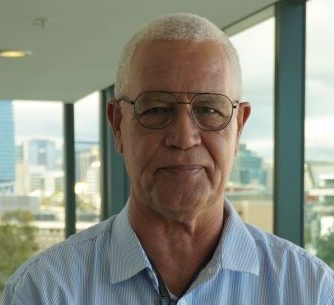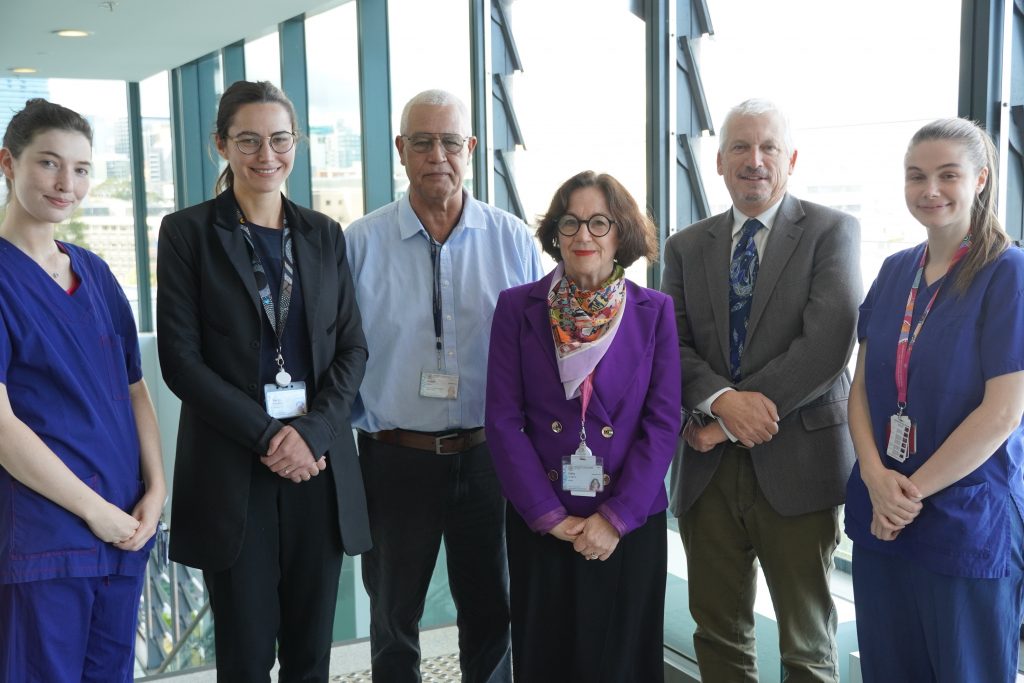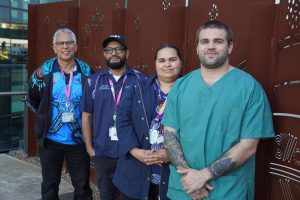Aboriginal and Torres Strait Islander Health Practitioners are using their clinical skills, in conjunction with their local community knowledge, to support the delivery of culturally safe and inclusive services at Central Adelaide Local Health Network (CALHN).
CALHN is one of the largest health service providers to a significant proportion of the SA Aboriginal community, caring for patients from metropolitan Adelaide, regional and remote South Australia and across our borders.
The network is continually working to improve how it delivers care to Aboriginal patients, and their families and communities. As part of this, CALHN is increasing the number of Aboriginal and Torres Strait Islander Health practitioners working across the range of specialist health areas throughout the network.
Telehealth service caring for Aboriginal patients with diabetes-related foot disease
Joe, who is one of CALHN’s Aboriginal Health Practitioners, is part of a team delivering CALHN’s telehealth service for Aboriginal patients with diabetes-related foot disease (DFD).
“Aboriginal and Torres Strait Islander Australians are 30 per cent more likely to be significantly impacted by DFD, which includes infection, ulceration or destruction of tissues of the foot, as we experience comparatively higher rates of diabetes and far higher rates of hospitalisation for lower limb amputation,” Joe says.
The telehealth service coordinates multi-disciplinary care, for mostly rural and regional patients, many of whom are Aboriginal. It also links patients to community-based health service providers for ongoing support, including local Aboriginal community-controlled health services.
“The telehealth service improves access for Aboriginal patients,” Joe says.
“A telehealth appointment, using video-conferencing, means patients can get a much more rapid diagnosis, early preventative treatment, and follow-up appointments all in their own local community.
“This in turn leads to fewer hospital admissions and helps to prevent amputations and improves our people’s health and long-term wellbeing,” Joe says.
Responsive care for Aboriginal consumers
Incorporating Aboriginal Health Practitioners as part of the patient’s treatment also helps to ensure Aboriginal patients receive culturally safe and responsive care, he says.
“We are here to help patients and to make their journey through the health system a little easier. If Aboriginal and Torres Strait Islander people feel more comfortable accessing our health services, they will experience better outcomes when they do,” Joe says.
“For any treatment that a patient receives, CALHN must make sure they have a thorough understanding of what is going to happen.
“Only when they do, can a patient give properly informed consent and once this happens, they are much more likely to comply with their treatment and any follow up.
Joe says Aboriginal people often don’t want to come to hospital due to past trauma and negative experiences.
“Aboriginal Health Practitioners help to break down this negativity and win back people’s trust. We work hard to build trust and respect, which is at the heart of good patient care,” Joe emphasises,” he says.
Aboriginal Health Practitioners “making big impact”
Telehealth foot service Senior Podiatrist, Katrina, says Joe and the other Aboriginal Health Practitioners are making a big impact with Aboriginal patients using the service.
“It’s also great to have Joe to help as a cultural mentor for all staff who may not have a thorough understanding of Aboriginal health needs,” she says.
Katrina says telehealth services are also removing the “white lab coat barrier”.
“Patients feel a lot more comfortable talking to us when they are in their own community and are often more forthcoming about other factors that may affect their ability to look after their health.”
Aboriginal Health Practitioners are also part of CALHN’s Cancer, Renal and Emergency Department teams.
“Employing Aboriginal people in these areas is a win but it can’t stop here, they are also needed in other areas, especially mental health,” Joe says.
“We are all stronger when we work together for all our patients and particularly our Aboriginal and Torres Strait Islanders patients. And this is truly the work of reconciliation – finding ways forward together,” Joe says.
Pictured from left to right: Podiatrist Elisa, Podiatrist Katrina, Aboriginal Health Practitioner Joe, Director of Podiatry Cathy Loughry, Professor Robert Fitridge, Podiatrist Hannah.




